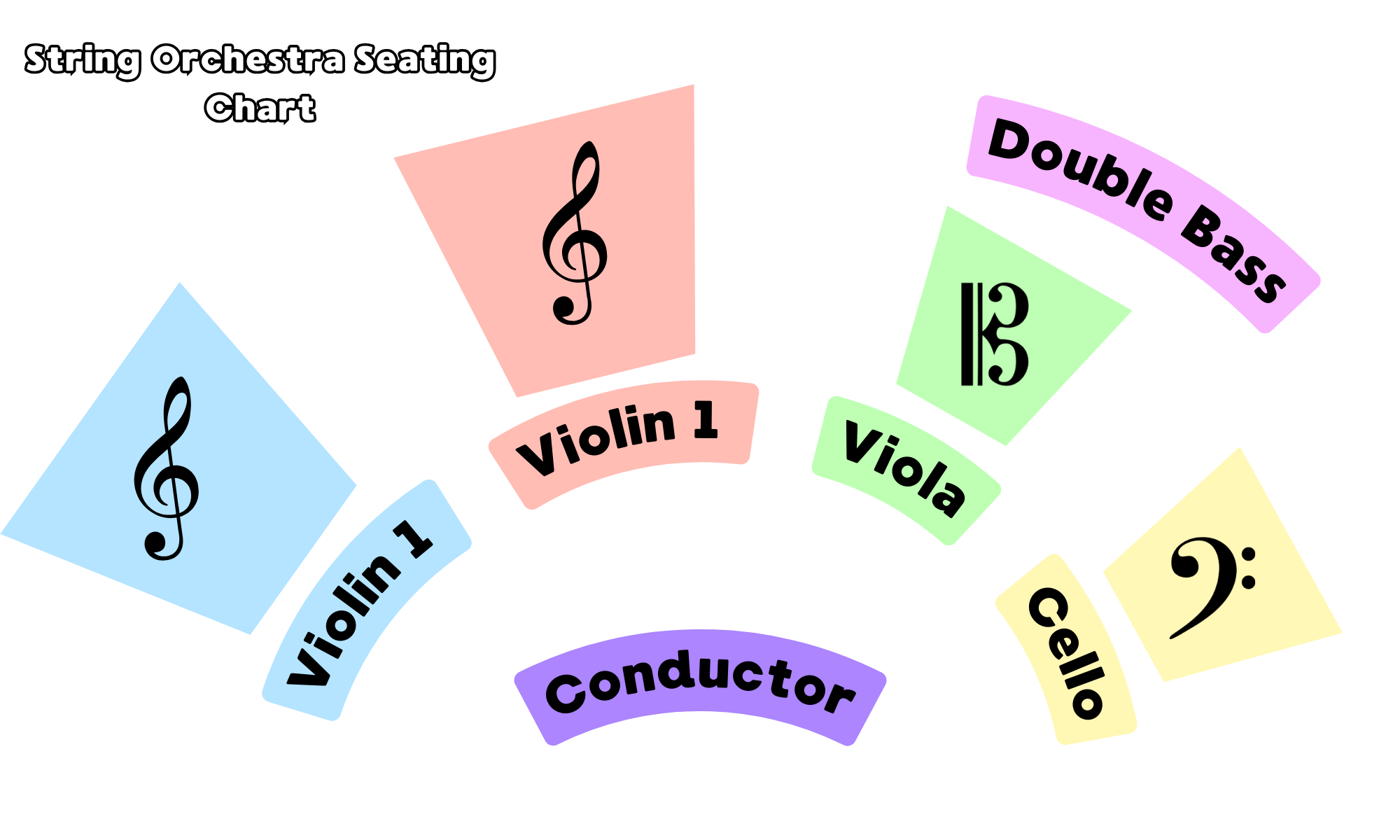A 101 Guide to Setting Up, Programming repertoire and teaching a String Orchestra
Establishing a string orchestra is a rewarding journey. Blending the unique voices of each student into a harmonious, collaborative and supportive team can be a challenge but with this simple guide, you can better organise and prepare. This 101 guide aims to educate and assist teachers and students in understanding the fundamental roles of each instrument within the string orchestra and the basics of programming music.
What are the sections of the String Orchestra?
1. 🎻Violins
Violins have a bright, versatile sound that can convey a wide range of emotions, from sweet and lyrical to sad and intense.
The first violins usually carry the melody, playing the highest notes in the orchestra. The second violins often support the melody with harmony and rhythmic figures, adding depth to the sound. They are often the ones who are most outgoing and want to show off! A confident violin section really carries the whole orchestra as their beautiful melodies sweep across the texture provided by…
2. 🎻Violas
Violas have a deeper, richer tone compared to violins, providing a warm and mellow middle voice.
Violas typically play harmony and inner parts, bridging the gap between the higher violins and the lower cellos. Their role is crucial in adding complexity and fullness to the orchestra’s sound.
I love the viola section, they are the glue that holds everything together. Without them, the ensemble feels hollow and lacks cohesion of sound.
3. 🎻 Cellos
Cellos produce a rich, resonant sound that can be both powerful and emotive, covering a wide range of pitches.
Cellos often play the bass line or harmony, but they can also take on the melody. They provide a strong foundation and are essential for the orchestra’s overall structure and depth. As cello is my main instrument I might be biased… they are the most versatile of the whole group. They can play in all registers and can help out in any section. Basses need an added boost? Violins need the melody down the octave? Violas want some rhythmic clarity? Cellos got you covered.
4. 🎻Double Basses
Double basses offer the lowest and most profound tones, contributing to the orchestra's deep, resonant base.
The double basses support the harmonic foundation and reinforce the rhythm. Their deep, grounding sound is pivotal in maintaining the orchestra’s balance and cohesion. As the foundation of the sound basses provide immense volume to the sound. They are the base (pun intended) of our musical cake - without them, the whole thing falls over! No amount of nice frosting from the upper strings is going to put the cake back together.
🎵 Programming Music for a String Orchestra
Programming music for a string orchestra involves selecting pieces that suit the ensemble's skill level and demonstrate the strengths of each section. Here are some steps to guide you:
1. Assess Skill Levels
- Evaluate the technical proficiency and experience of your students. Choose music that challenges them without causing frustration.
As a rule of thumb, you should be aiming for music that is slightly easier than the group’s capability within lessons. E.g. If your middle school or junior school group is between grades 1 to 2 or has been playing for roughly 2/3 years aim for pieces that are around level 1 to 1.5.
2. Select Repertoire
- Start with simpler pieces to build confidence and cohesion. Gradually introduce more complex works as the ensemble grows more comfortable.
- Incorporate a variety of genres to expose students to different musical styles and techniques.
Most importantly, listen to your students! Get them to suggest songs and get their feedback on repertoire. It’s no use trying to flog a dead horse and get them to play a song they don’t like!
3. Balance the Roles
- Ensure that all sections have meaningful parts to play. Avoid pieces that overemphasise one section at the expense of others.
- Use arrangements that highlight the unique qualities of each instrument, fostering an appreciation for their distinct roles.
4. Rehearse Effectively
- Focus on intonation, rhythm, and dynamics. Regular sectional rehearsals can help address specific challenges within each group.
- Encourage communication and collaboration among students to develop a cohesive ensemble sound.
5. Performance Preparation
- Plan regular performances to give students goals to work towards. This can include school concerts, community events, or competitions.
- Provide feedback and support to help students improve and gain confidence in their abilities.
Setting up a string orchestra and programming its music is a multifaceted process that requires patience, dedication, and a deep understanding of each instrument's role. By following this 101 guide, educators can create a rich, educational experience for their student ensembles, fostering a love for music and teamwork.
For more detailed resources and sheet music tailored for string ensembles and orchestras, visit these pages…
https://declanpostlethwaitemusic.squarespace.com/shop/string-ensemble
https://declanpostlethwaitemusic.squarespace.com/stringorchestra
🌟 Happy teaching and conducting!

